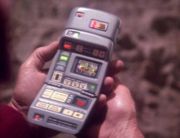[I’m gonna upgrade the site today, so you might experience temporary interuptions while I do a backup of the existing pages and content and replace with the newest, latest WordPress version, version 2.6.3.]
A friend of mine recently said he wanted to start blogging, and was looking at WordPress to use as a blog. I quite like WordPress, as you may have noticed. I have been using it for some years now, but there are some caveats to be aware of for a blogger new to WordPress:
- If you decide to host your own blog, be prepared to upgrade at short notice. Since WordPress has become very popular to use as a blog platform, the hackers target this much more now as well. My blog got hacked this year sometime during the two or three weeks I was vacationing and enjoying the summer, so you really need to regularly visit your blog and check it (WordPress now tells you in the admin interface that an update is available). An alternative is to use the blogging platform that WordPress provides via www.wordpress.com.
- Test any new plugins that you want to install one by one, especially if they are new or in beta.
- Disable free registration for users; this seems to be a popular way of attacking, first creating a user on your blog and then using privilige escalation to get write access to your site. If you want that other people contribute to your blog, define them yourself.
- Get an Akismet API key (free for personal bloggers) and open up your comments for all visitorss : let akismet do the heavy work of checking your comments for spam, and give your visitors the chance to react.
- Make a regular backup of both your wordpress db content and your files on the site; especially, do this before you upgrade !
There are many more tips, but these are the ones that I practice.
